From Portugal back to Spain
The Algarve
From our last anchorage it was a short hop under cliffs eroded into arches, caverns and pillars and into the harbour at Lagos where we moored up in the very centre of Portuguese tourist heaven. Brits, Germans, French, American, probably even an Australian or two; yikes.
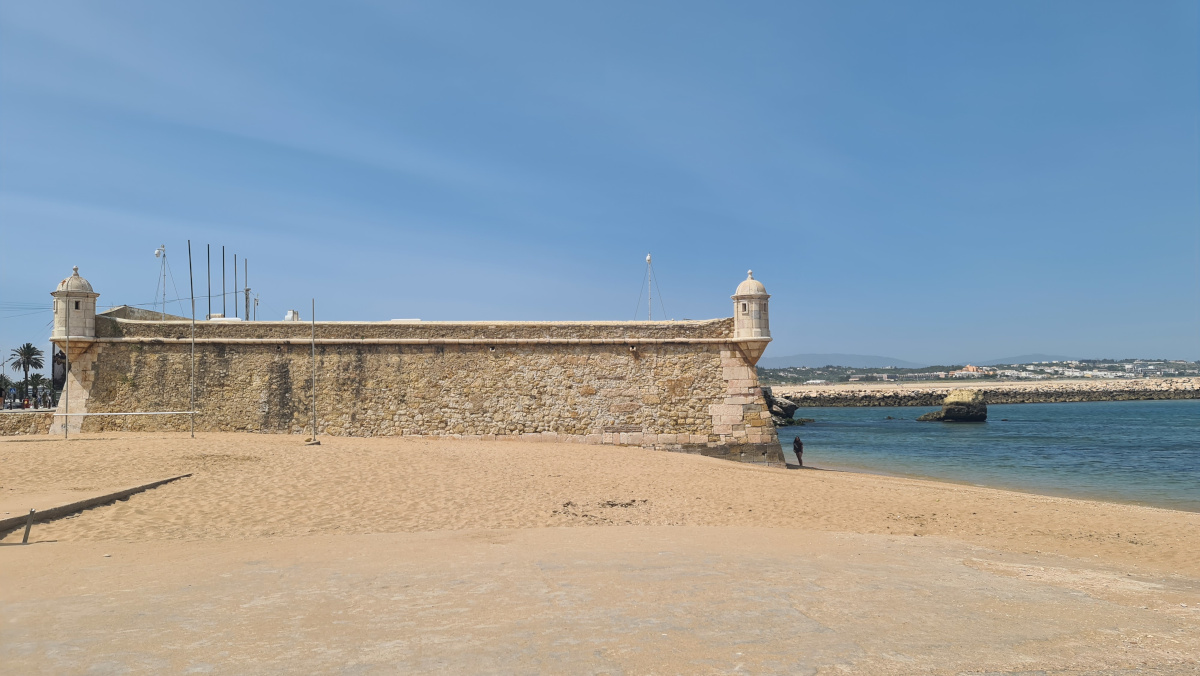
Forte da Ponta da Bandeira, guarding the entrance of the Bensafrim river at Lagos.
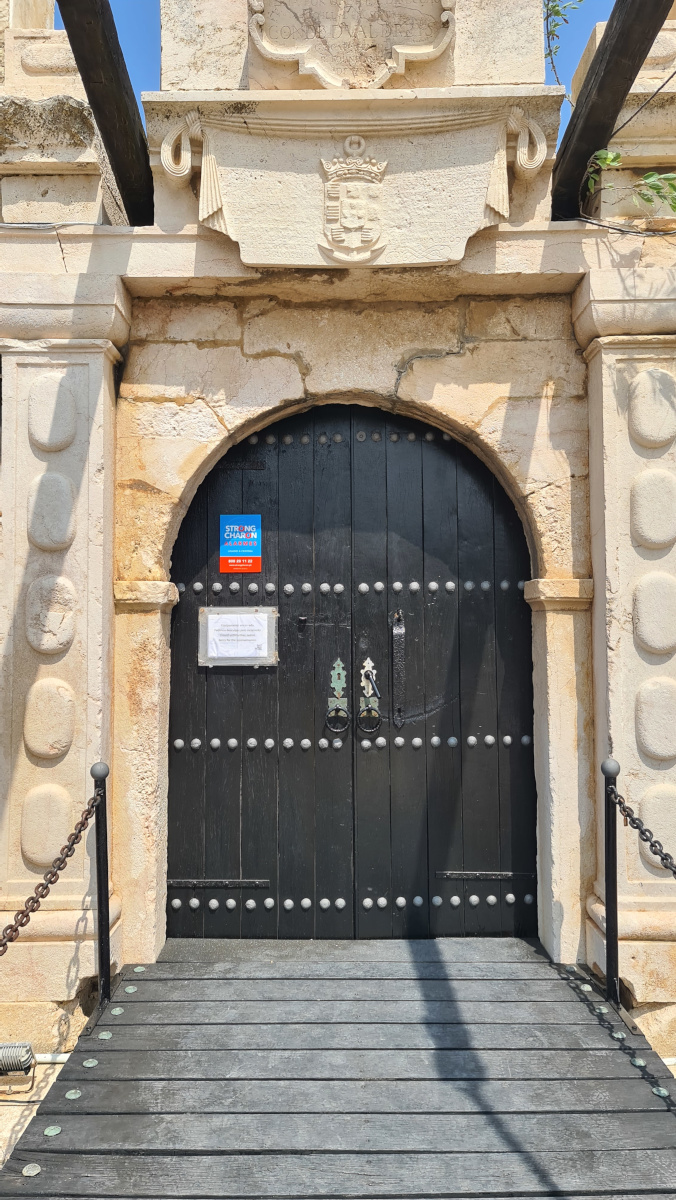
Of course, because we were interested in visiting, the Forte was closed to visitors.
This is where the Algarve (from ‘al-gharb’, ‘the west’ in Arabic) starts, and stretches east along the coast to Faro. Algarve’s beautiful beaches have lured tourists since the 1960s, turning small fishing villages into world famous tourist hubs like Lagos, Albufeira and Faro.
Street scenes from Lagos.
Lagos
The Lagos’ marina was at the epicentre of it all, brimming with tourist hotels, restaurants and tour operators. Without even trying we were in the very thick of it.
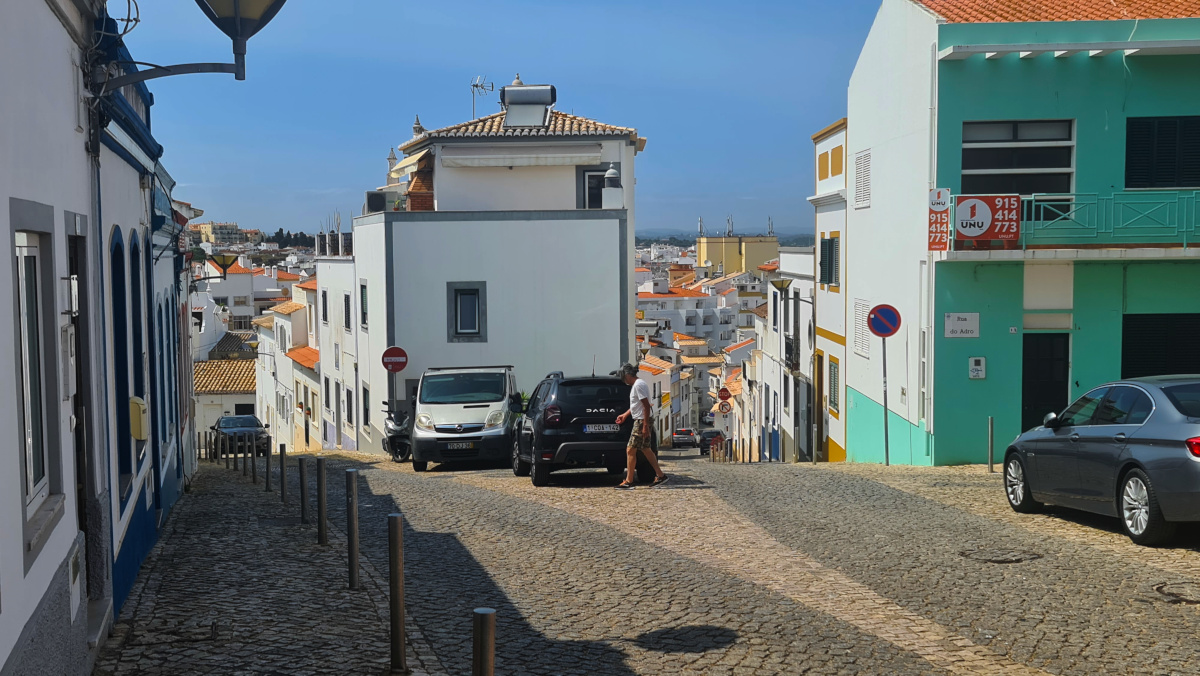
More street scenes in Lagos.
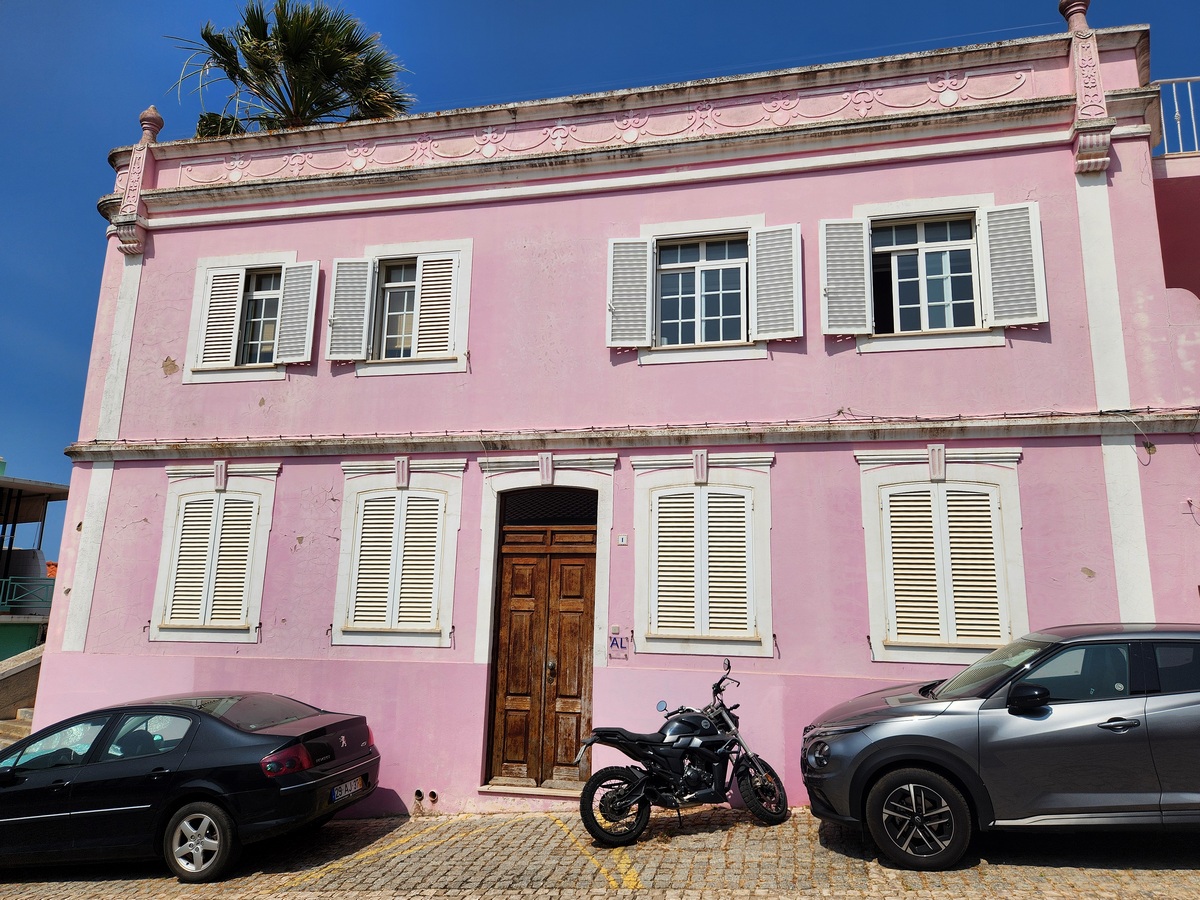
The colours and architecture reminded us of buildings in Central and South America, and the Caribbean. Given the history, no surprises there, really.
What was once the capital of the Portuguese kingdom had some nice oldish areas and a spectacular coast line and, being tourist focused, was an easy place to be.
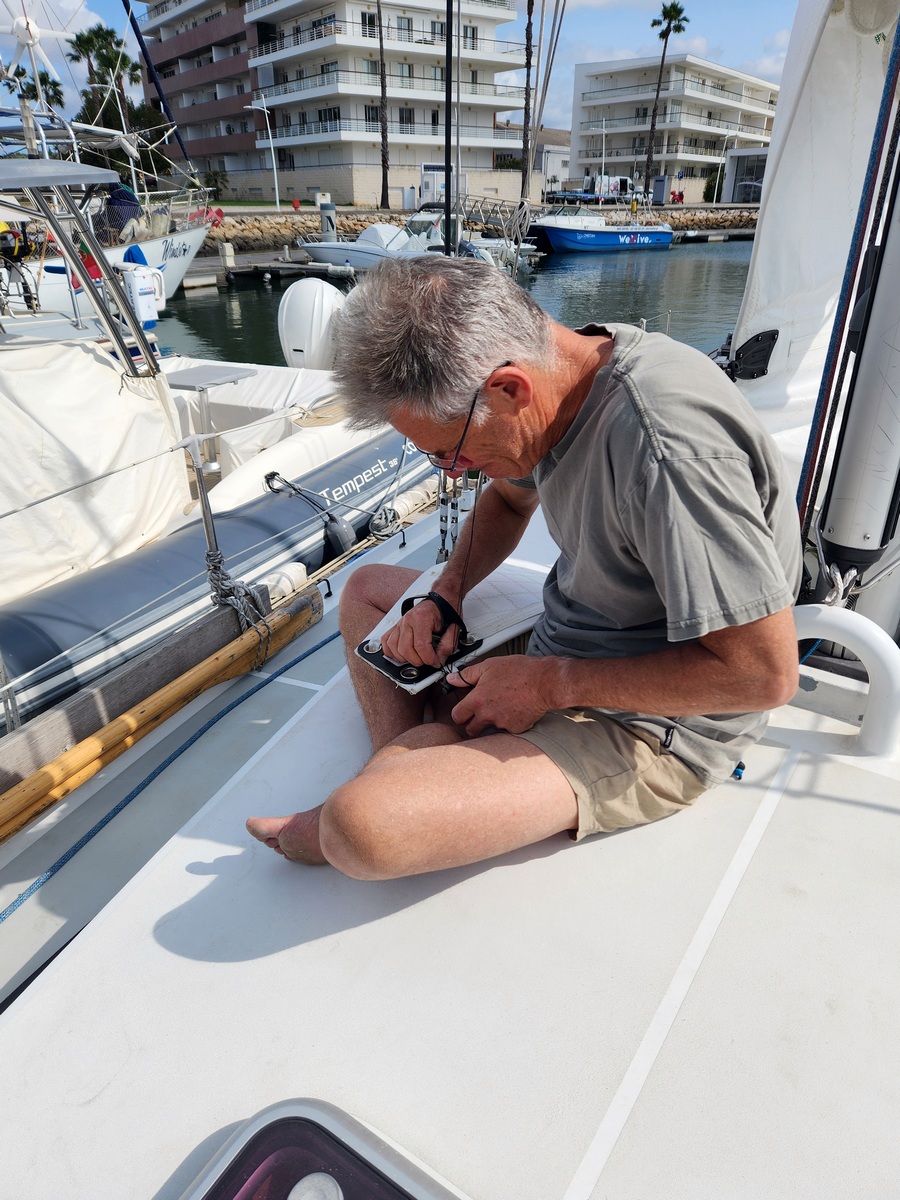
David attending to the never-ending list of boat jobs. This time, replacing the top slider on our main.
Anyway, Lagos served us well enough for a couple of days of fixing a damaged sail, relaxing and doing a few boat jobs before pushing on eastwards along the Algarve coast.
Lagos had plenty of stork nests, which were huge and must have been very old.
Faro
After Lagos the low rotted cliffs gave way to long beaches and low dunes.
Interesting rock formations along the Algarve coast near Lagos.
We sailed past, and at Faro, we entered the main channel that leads into the marshland at Cabo de Santa Maria and anchored up in strong easterly wind at a fork in the channel half a mile from its entrance.
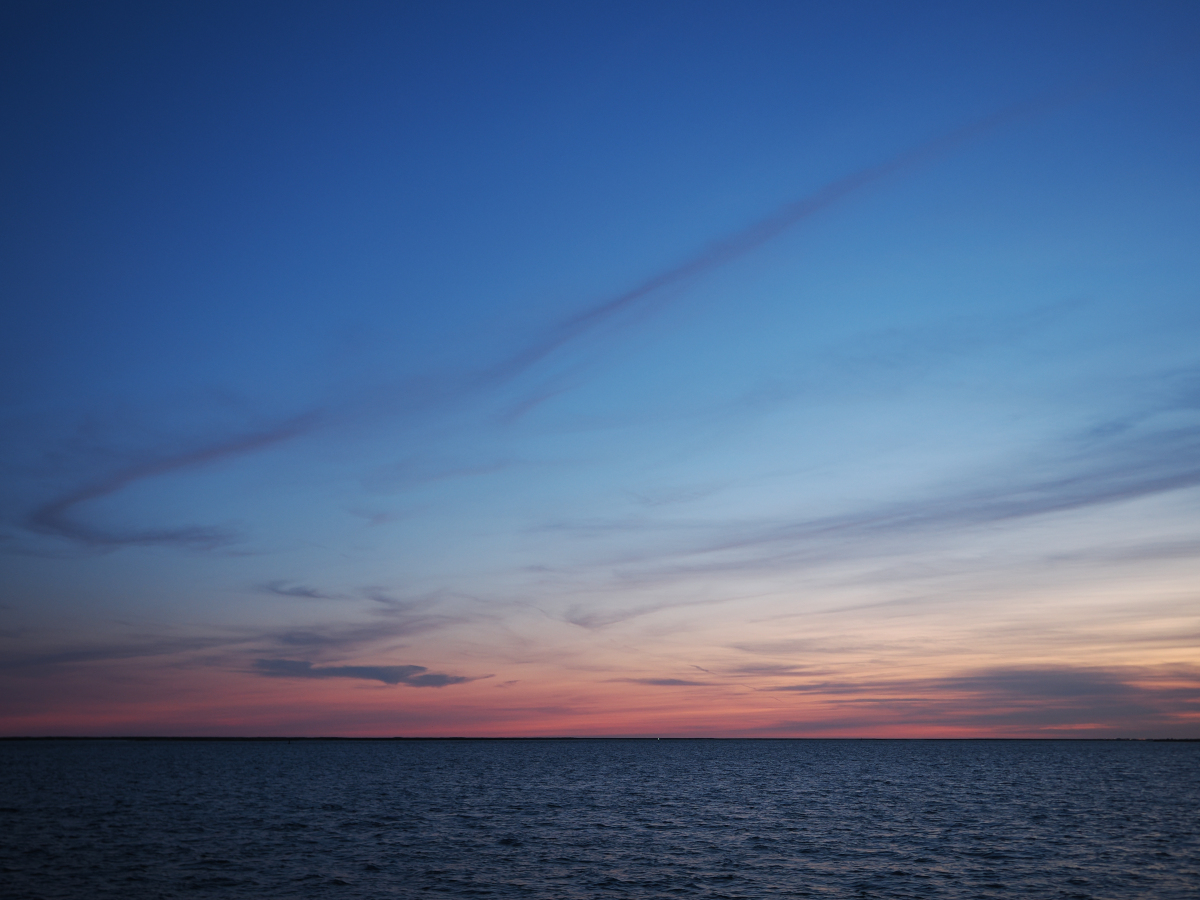
Another rather nice sunset.
The next morning while waiting for the tide to turn and to make our escape to the sea, we filled in our time with a few boat jobs. Our water pump had finally failed completely after a week or so of telling us that it was poorly, so that got replaced. A slider in the main sail got turned the right way around, and so on. When the time finally came to leave however, we left it just a few minutes too late.
Portuguese customs
We were all but ready to go when, on the very last day we were to be in Portugal, a Portuguese Customs boat came along side and began an inspection. This proved to be the most thorough inspection of our paperwork so far, with on top of the usual sightings of passports, boat registration and insurance papers, also requests for evidence of driver/marine licenses, international certificates of competence (a type of boating license), and living addresses.
View towards Farol from Yuma, different times of the day.
As usual the two customs fellas were a bit gruff to start off with but, by the end, were busy telling us about the glories of Portugal, among which was the discovery of Australia. Pretty much every European seafaring nation seems to make this claim, the English, the Dutch, the Portuguese, and probably the French too. Too many discoverers and none of them the real ones! Anyway, our Customs visit was pleasant and short enough that we got away well in time.
Back into Spain
That evening just inside the mouth of the Rio Guardiana, the border river between Portugal and Spain, we anchored adjacent to a big saltmarsh on the Spanish side of the river. Again, a stiff 20-25kn wind was blowing but this time straight down the river and, with plenty of fetch and the wakes of a constant stream of fishing boats, it made for a very wobbly night; not particularly pleasant.
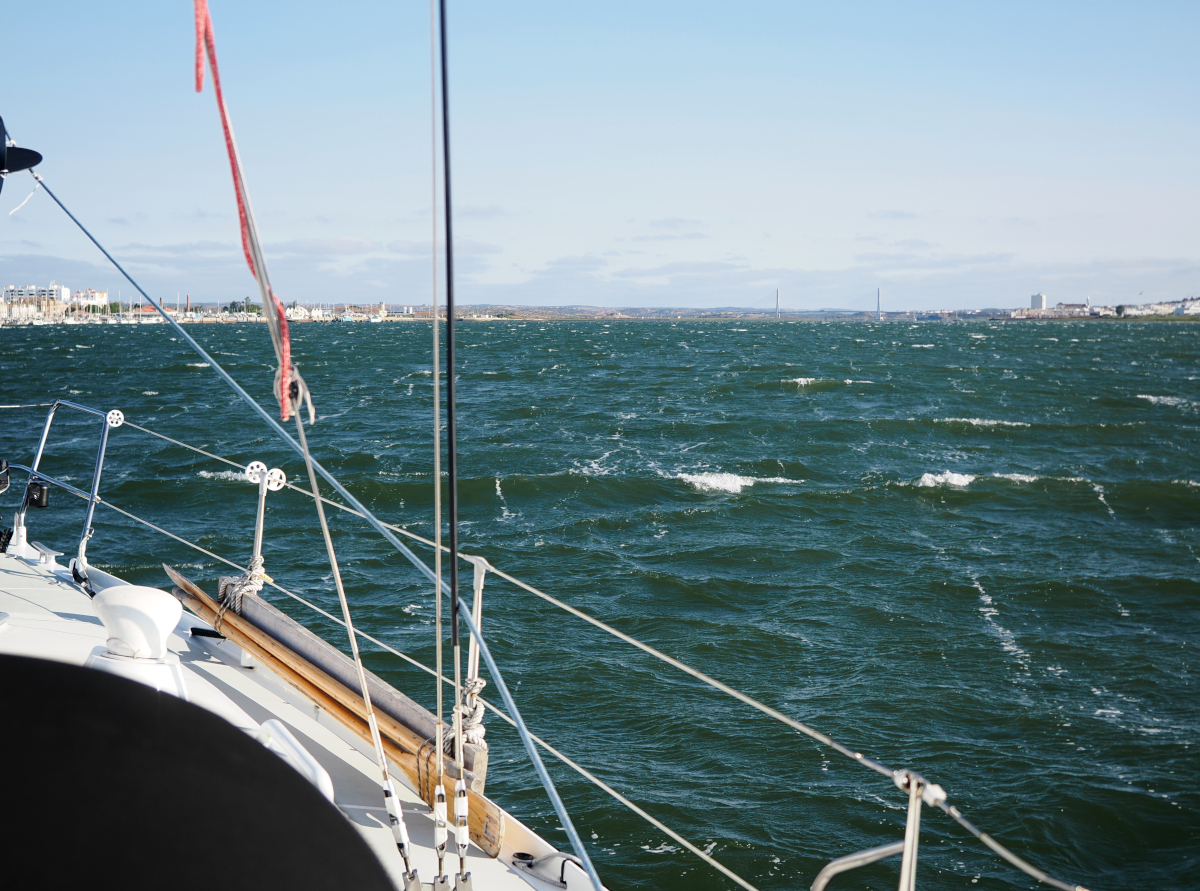
Strong winds (20-25kn) coming straight down the Rio Guardiana, making for a long and unpleasant night.
Flamboyances of flamingoes
The next morning however, a pleasant 10-15kn wind took us east, along a low coast dominated by dunes and marshes. In the far distance, we could see factories and petro-chemical plants at Huelva – always a good use of a wetland.
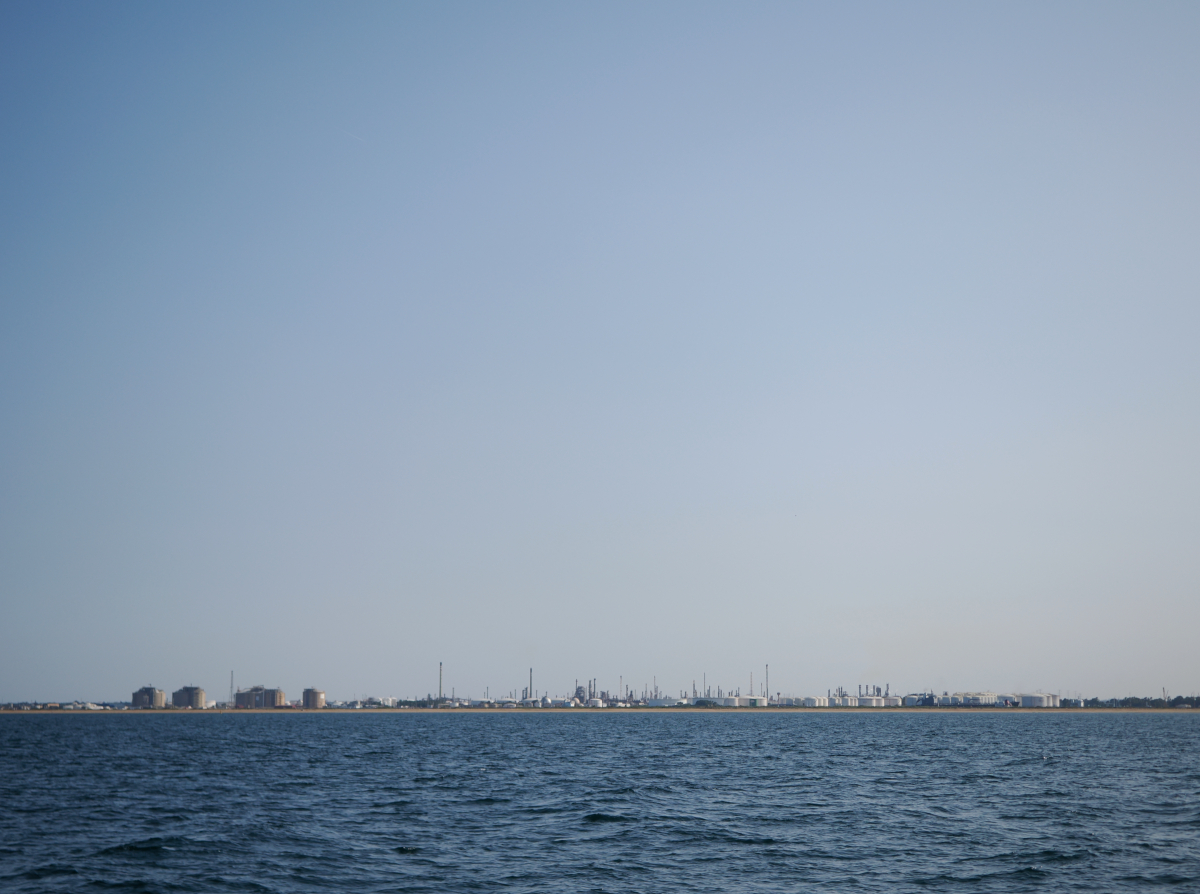
Huelva’s industrial sky-line.
In the early evening, we turned into the channel that leads up past the town of Punta Umbria and towards the Paraje Natural Marismas del Odiel (Odiel marshes). We motored a few miles upstream and anchored in a peaceful spot at the junction of two channels.
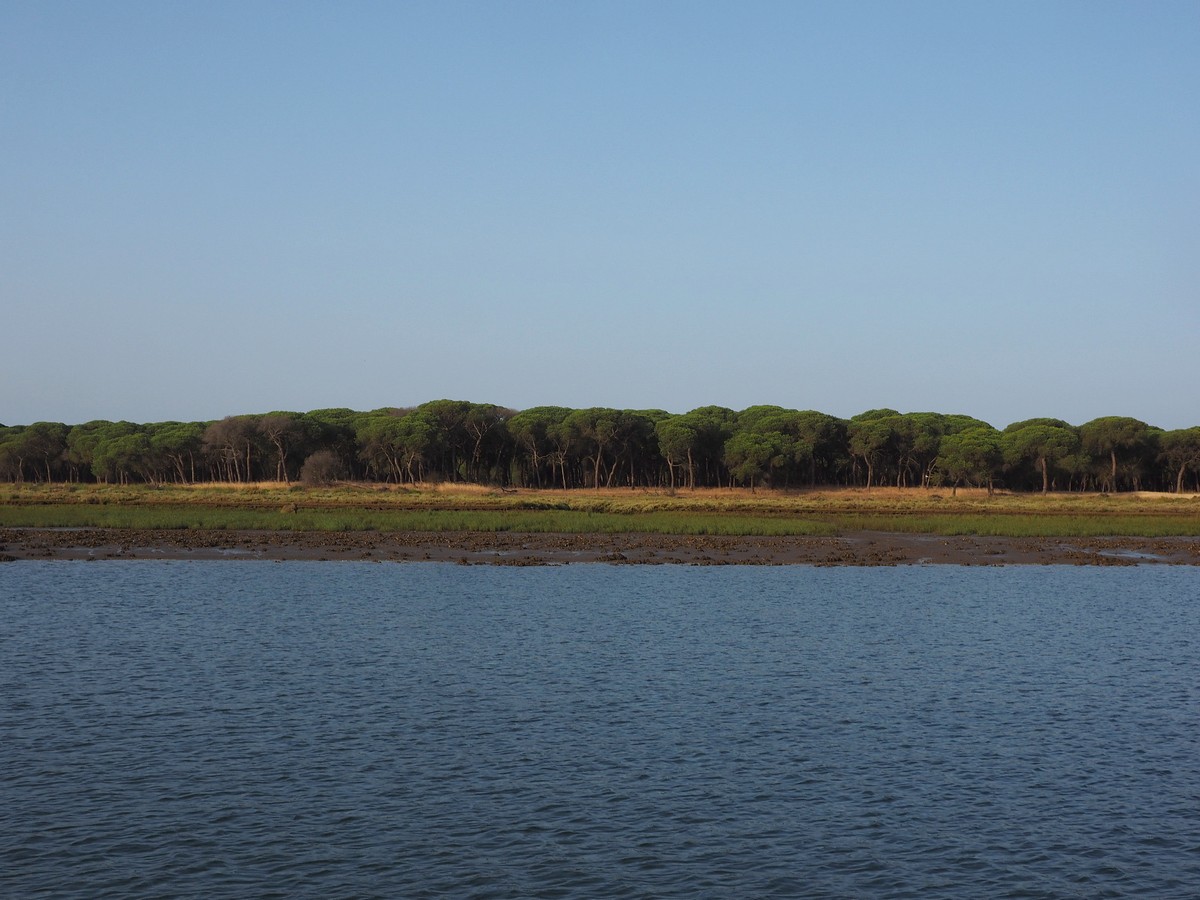
Beautiful patch of native pine trees on the shoreline.
On the horizon to the NE of us the town of Huelva with its overpasses and factories could be seen while around us closer by marshlands, saltmarshes and forest dominated.
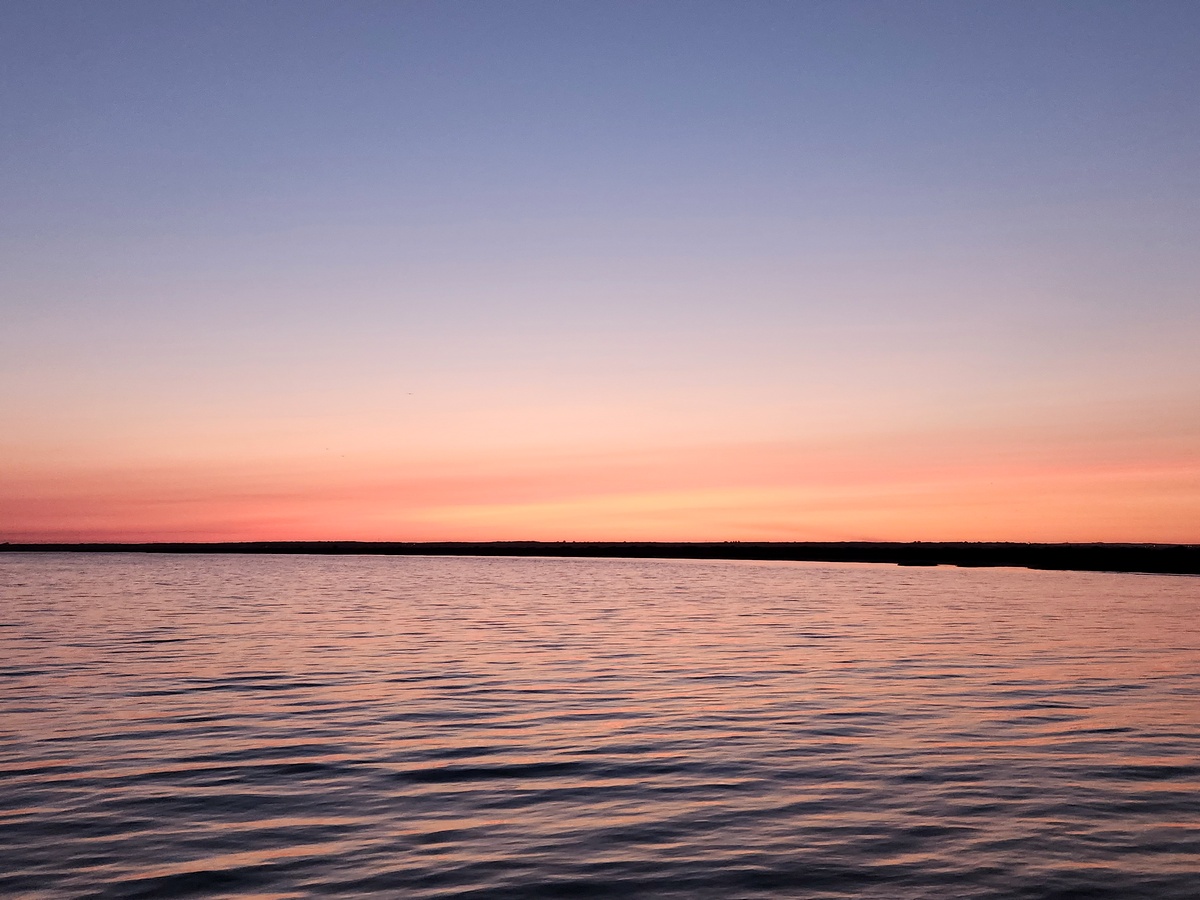
The sunset over the marshes was rather pretty.
Huge flocks, or more correctly flamboyances, of flamingoes came gliding in from the east to land, just out of sight, behind the dykes to the north while gulls patrolled the low tide mud. Gorgeous!
Beautiful flamingoes flying over Yuma.
The next day, we slipped down the river, through the fishing fleet spread out on the mud and across the river channel and made our way out to sea.
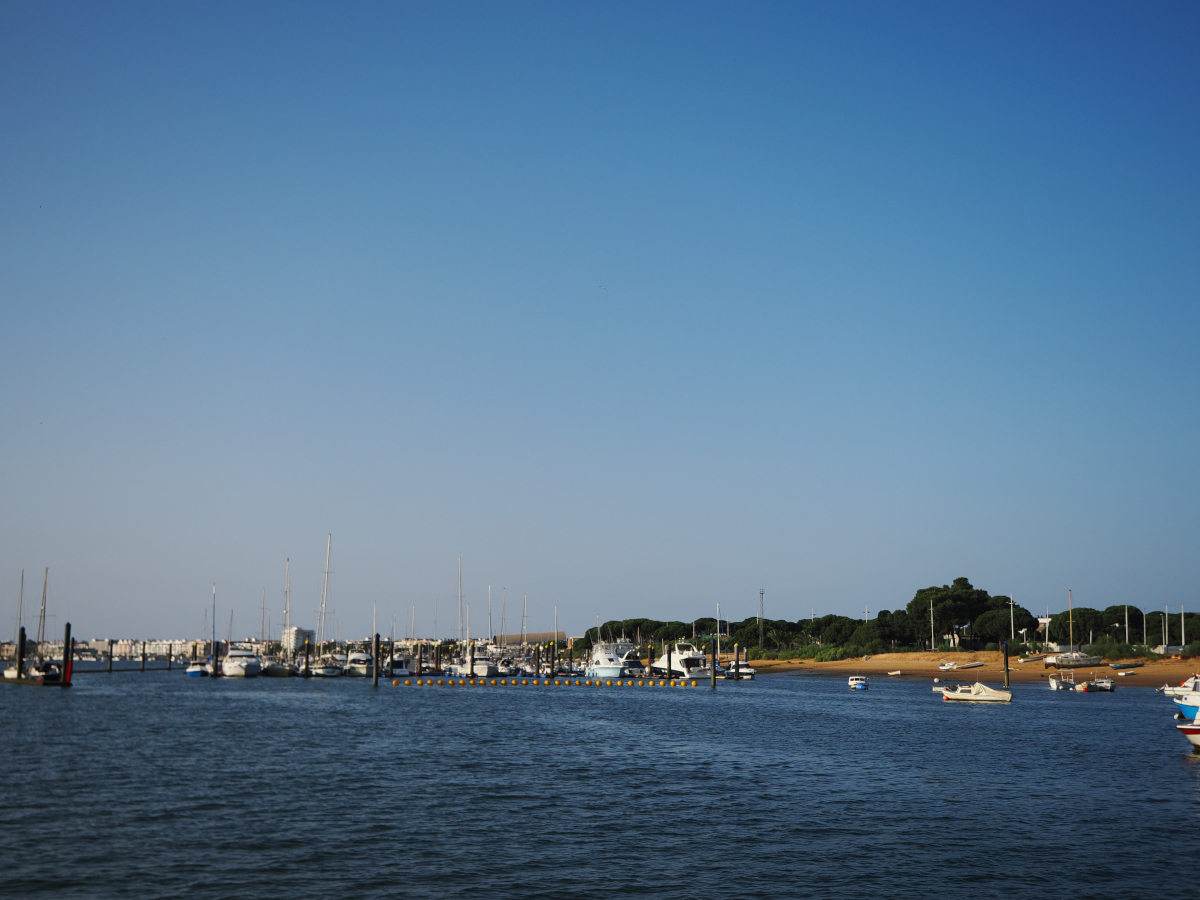
On our way to the river’s mouth.
From the river, Punta Umbria gives every impression of being all about fishing, professional and recreational, with its rough and tumble fleet of boats, large and small, nets drying on the docks and its very lived in looking apartment buildings built close along the water’s edge.
Fishing is big business in Punta Umbria.
As a farewell, a couple more flamboyances of flamingoes flew past, heading out towards the sea.
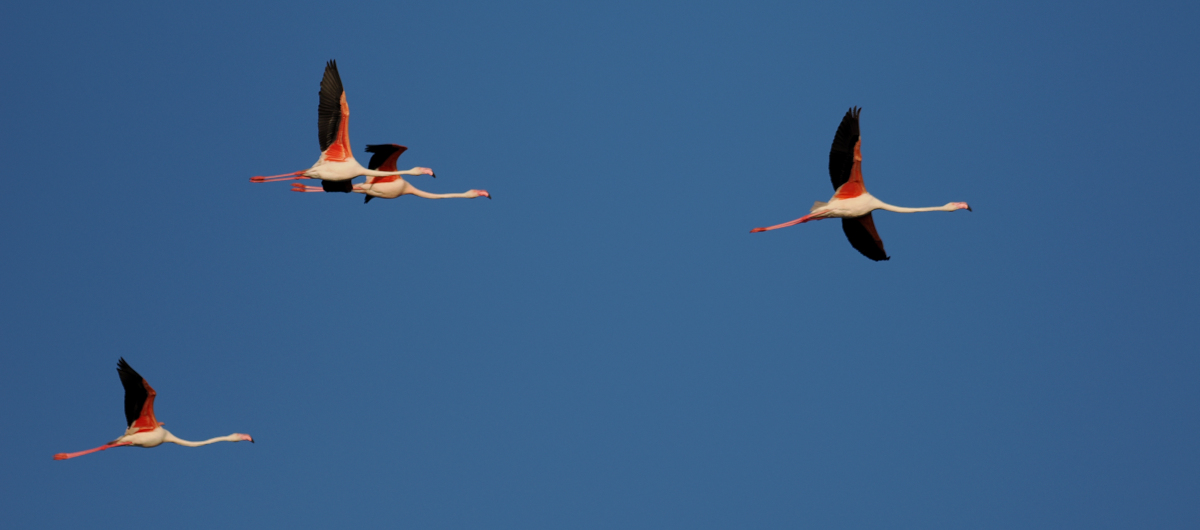
A small flamboyance of flamingoes.
As we headed along the coast, Huelva’s petro-chemical factories sent us a final farewell in the form of some thick, choking petro-chemical vapours.
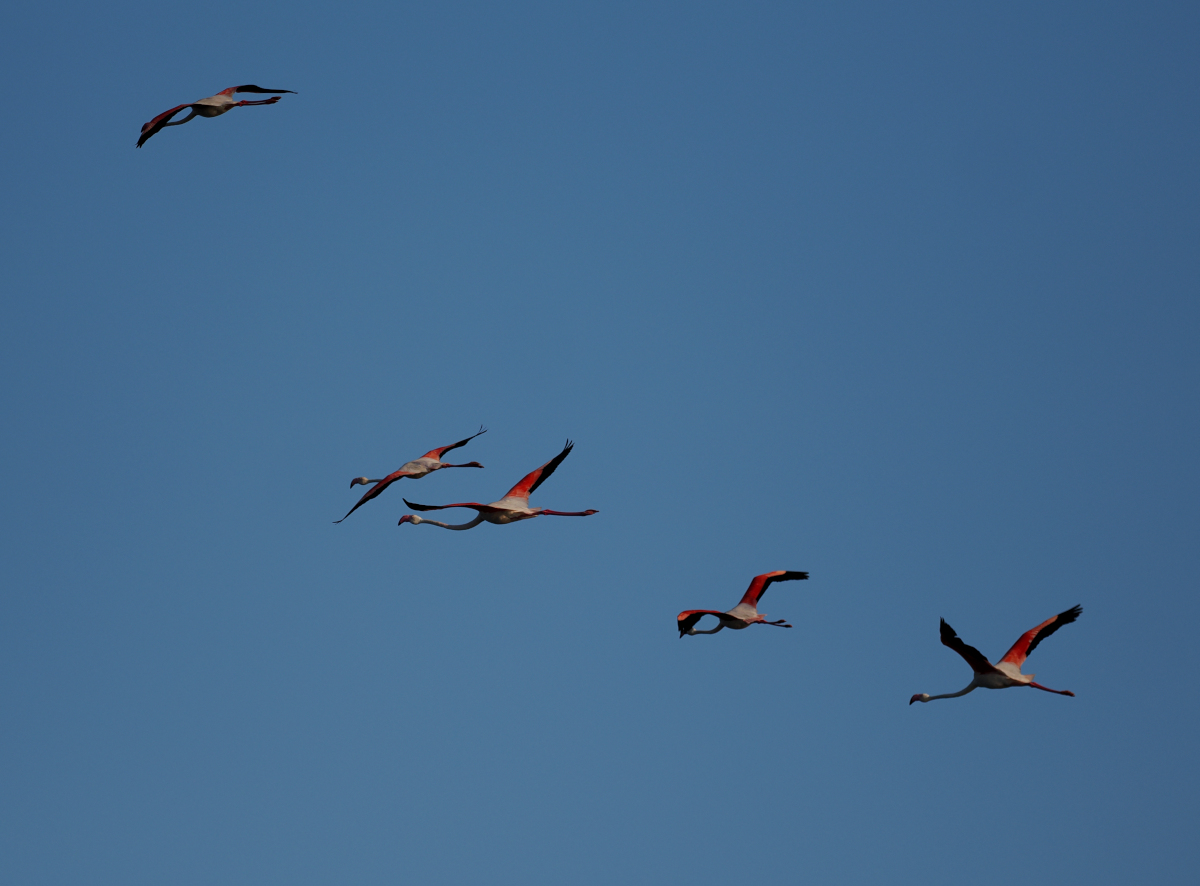

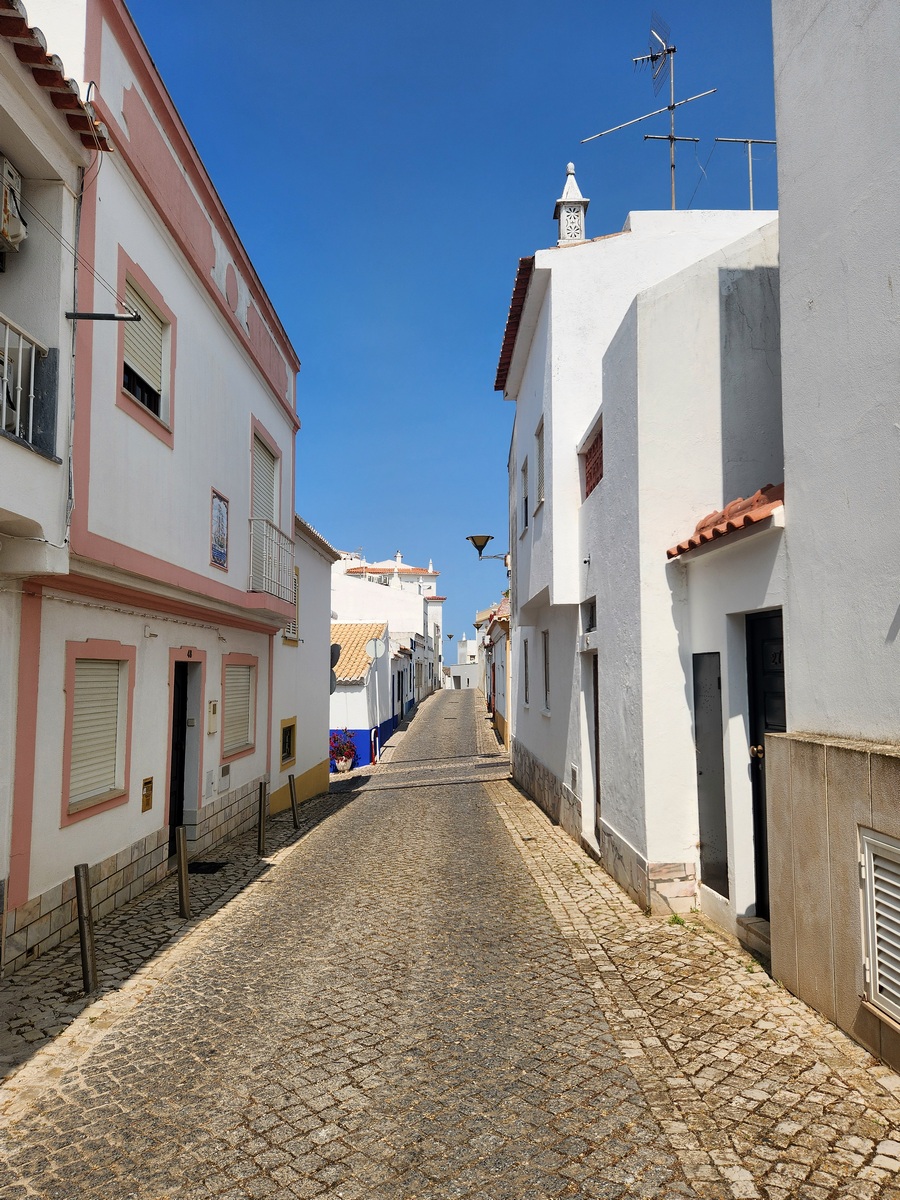
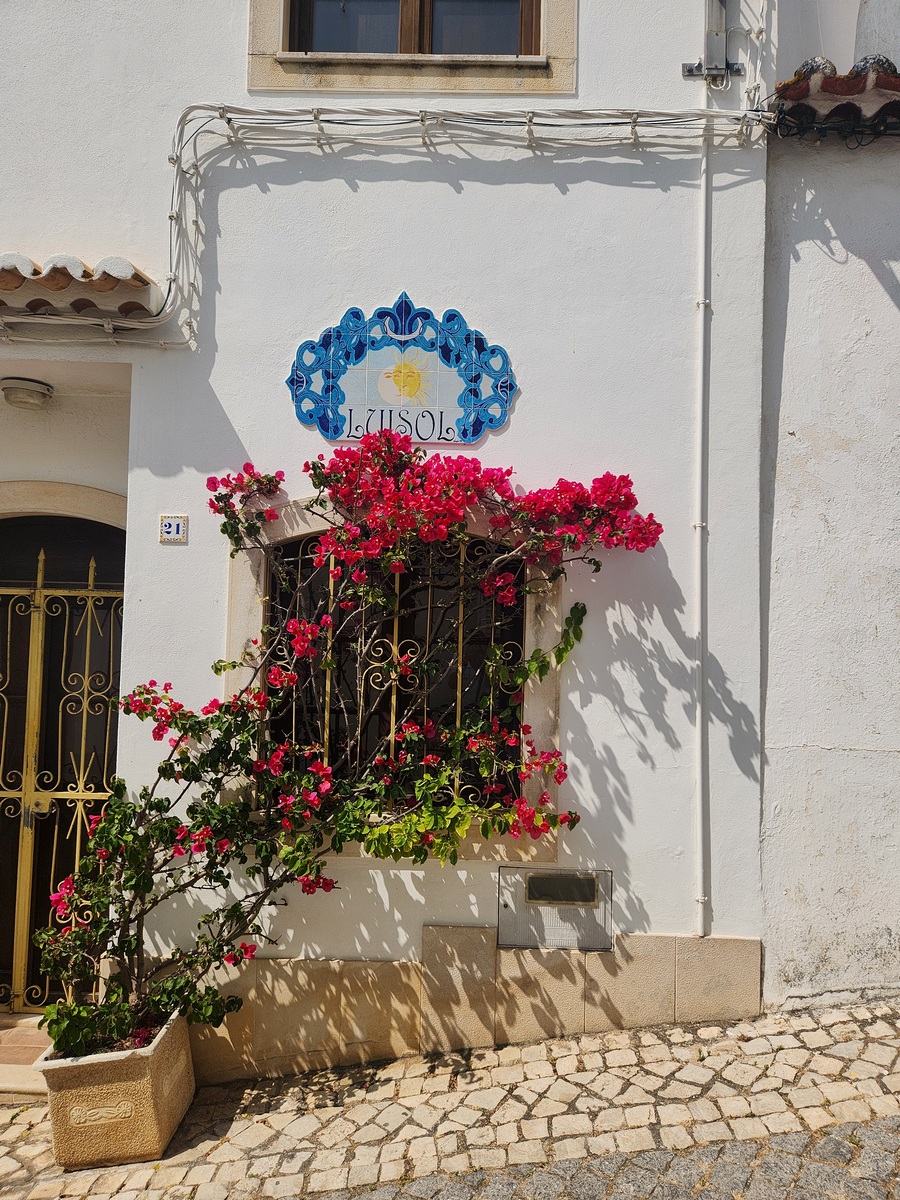
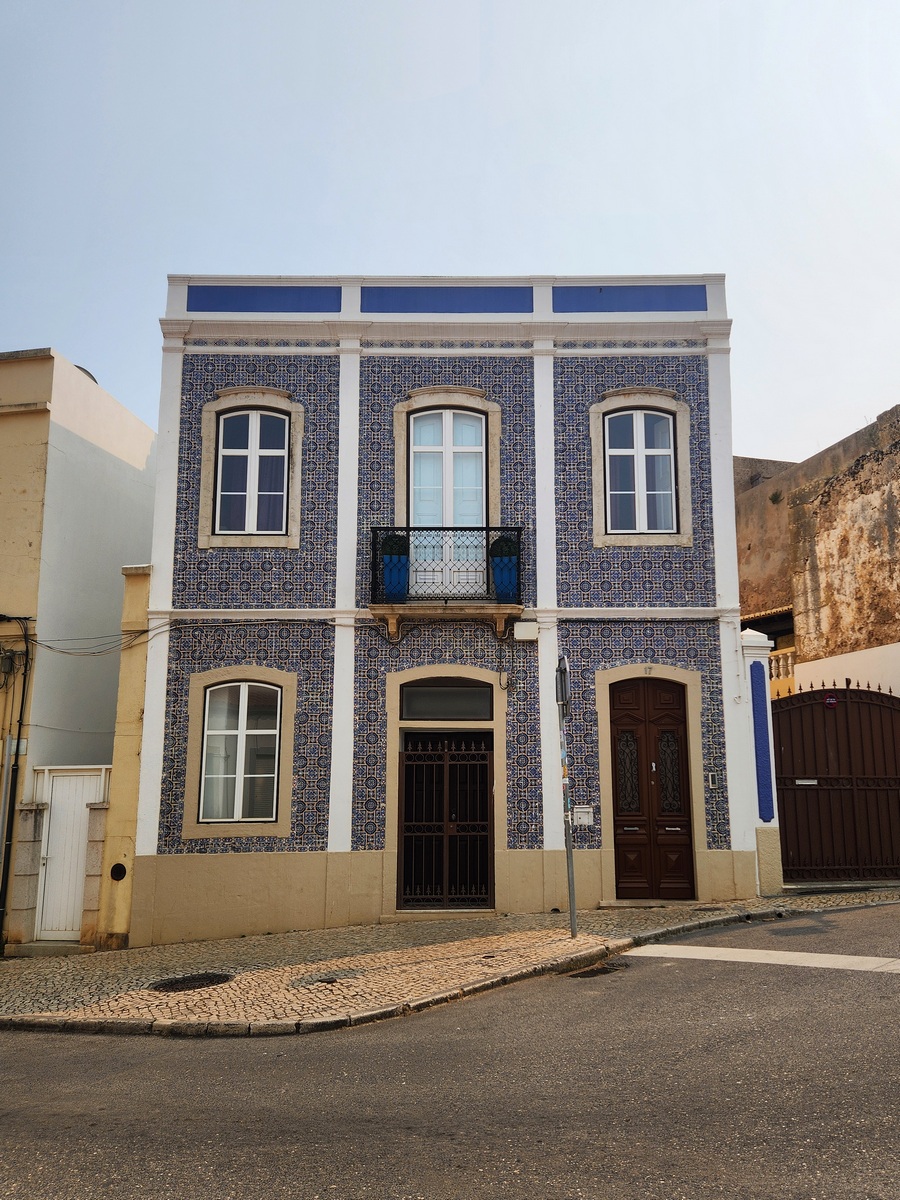
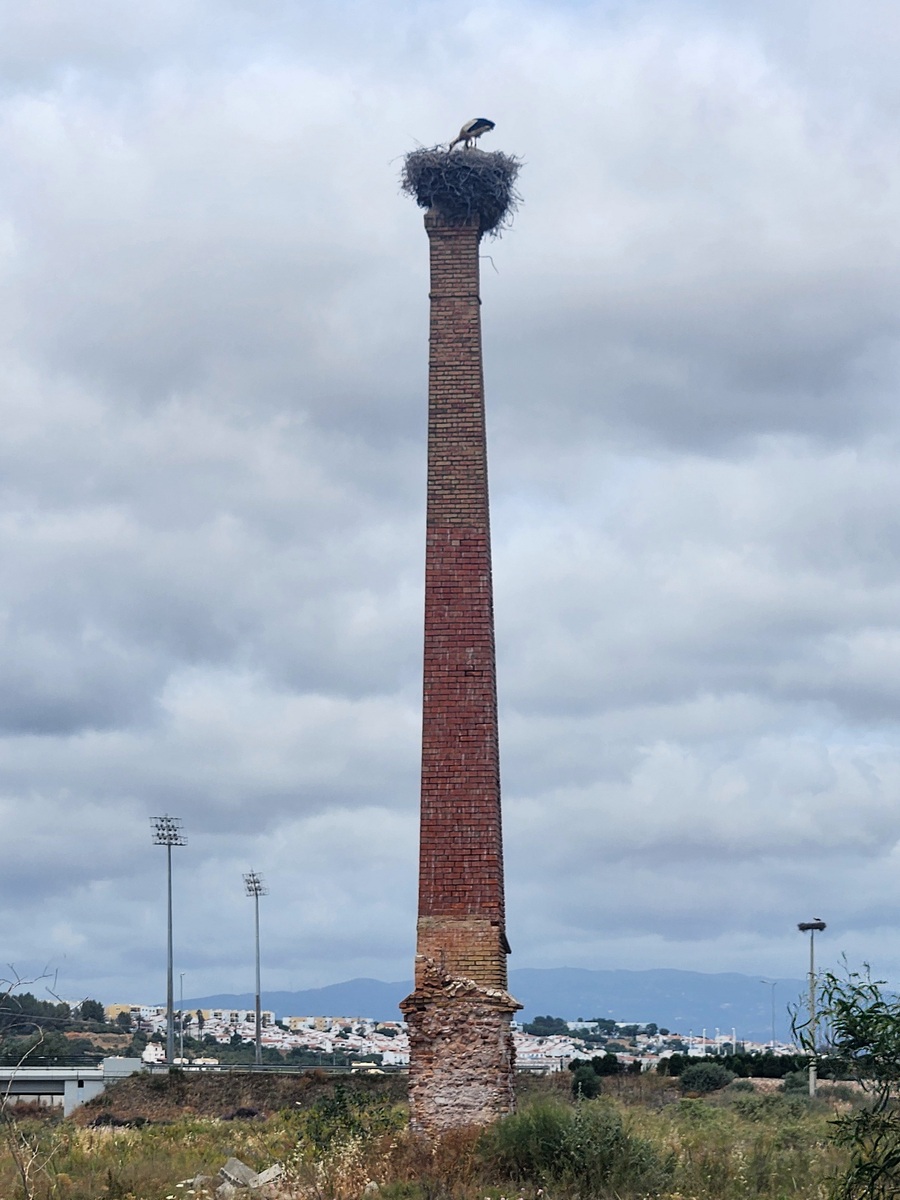
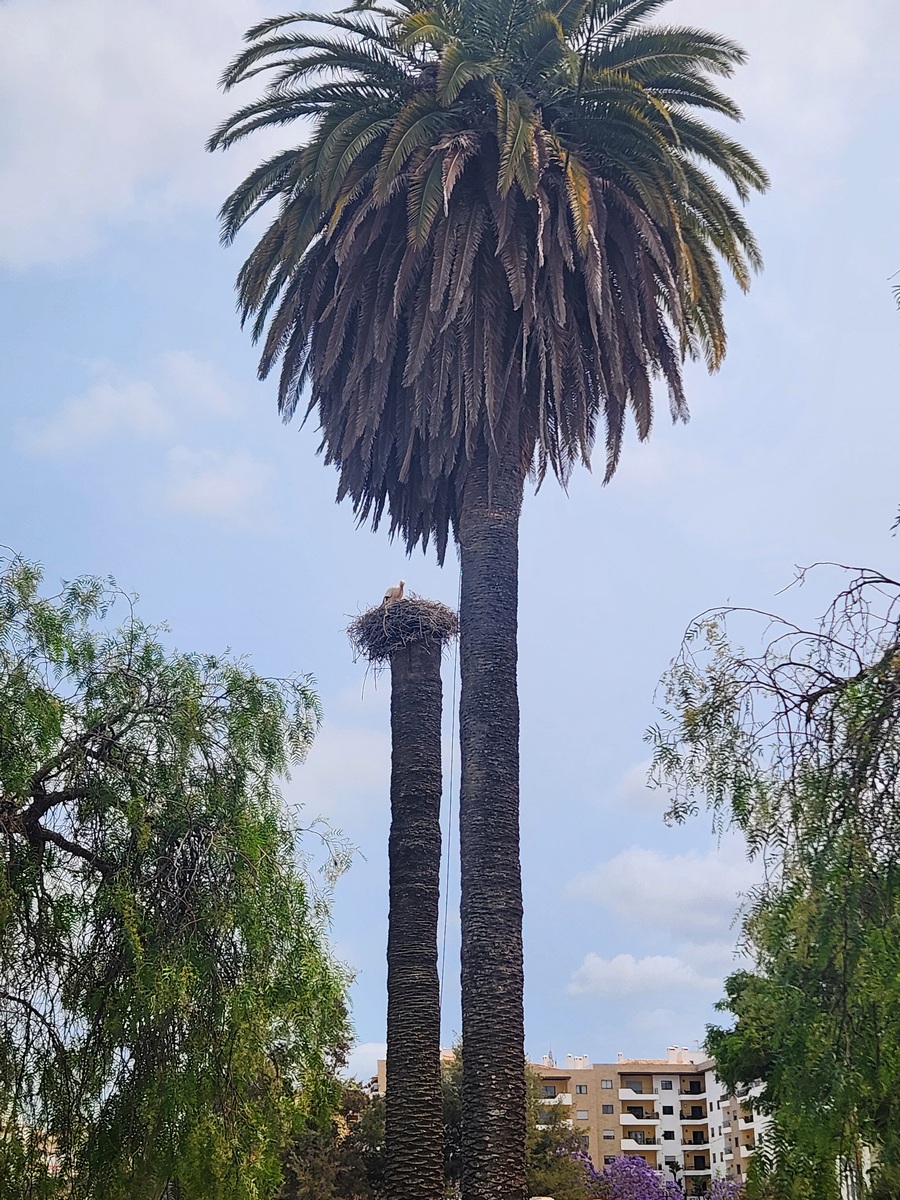
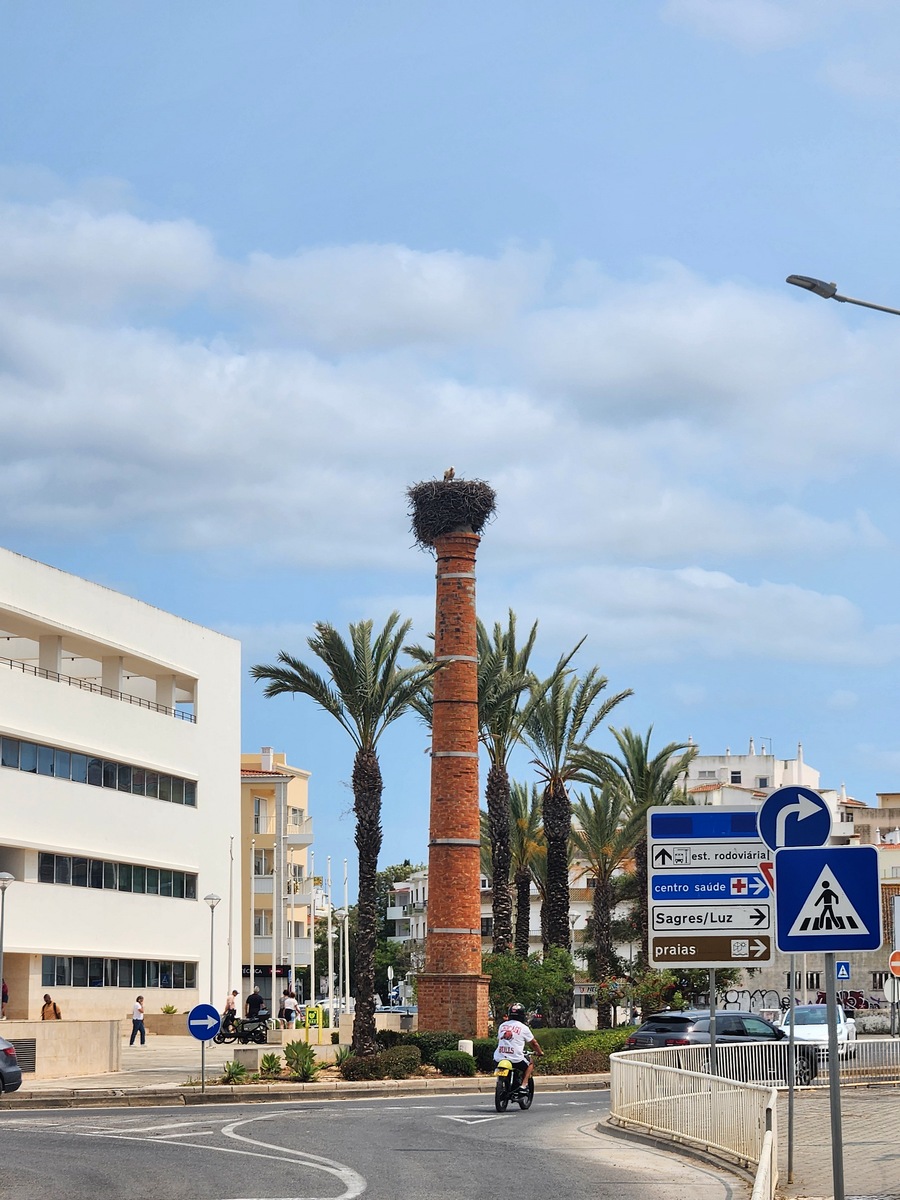
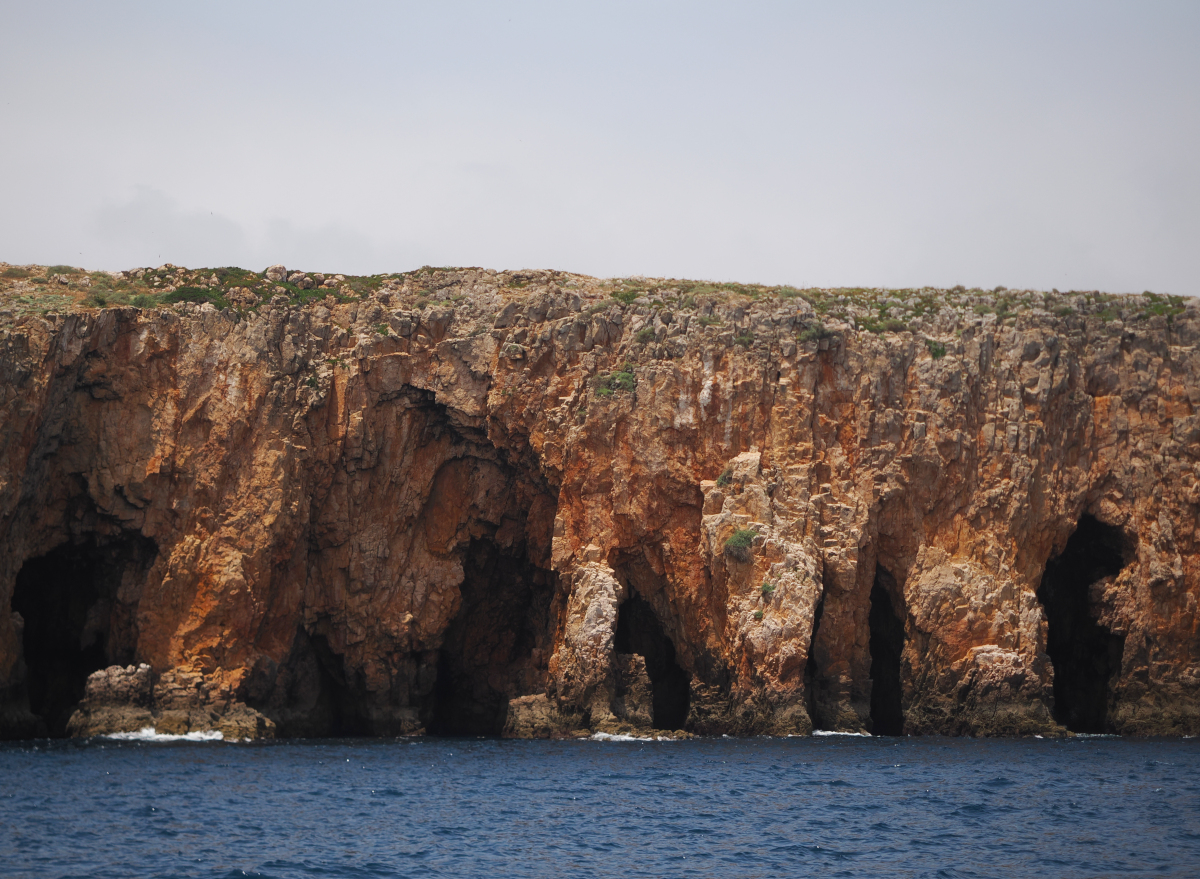
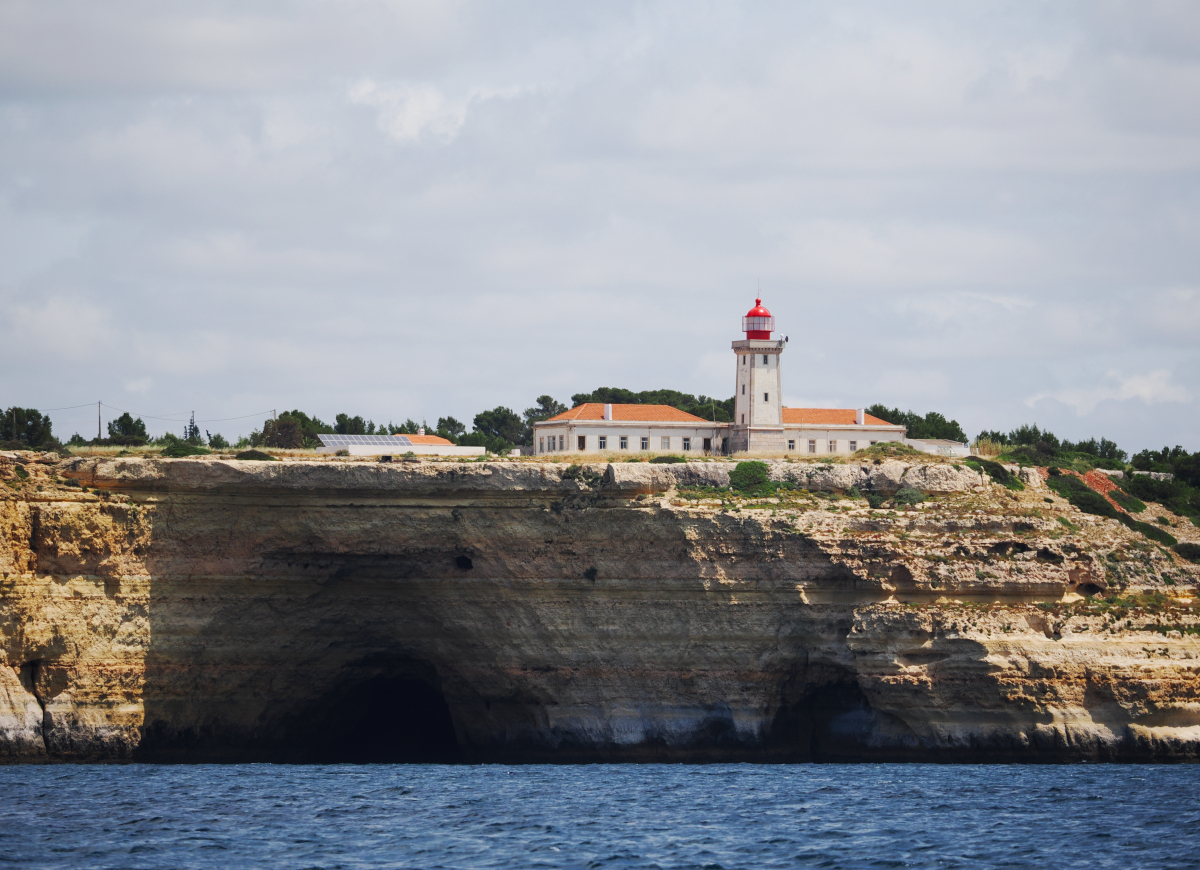
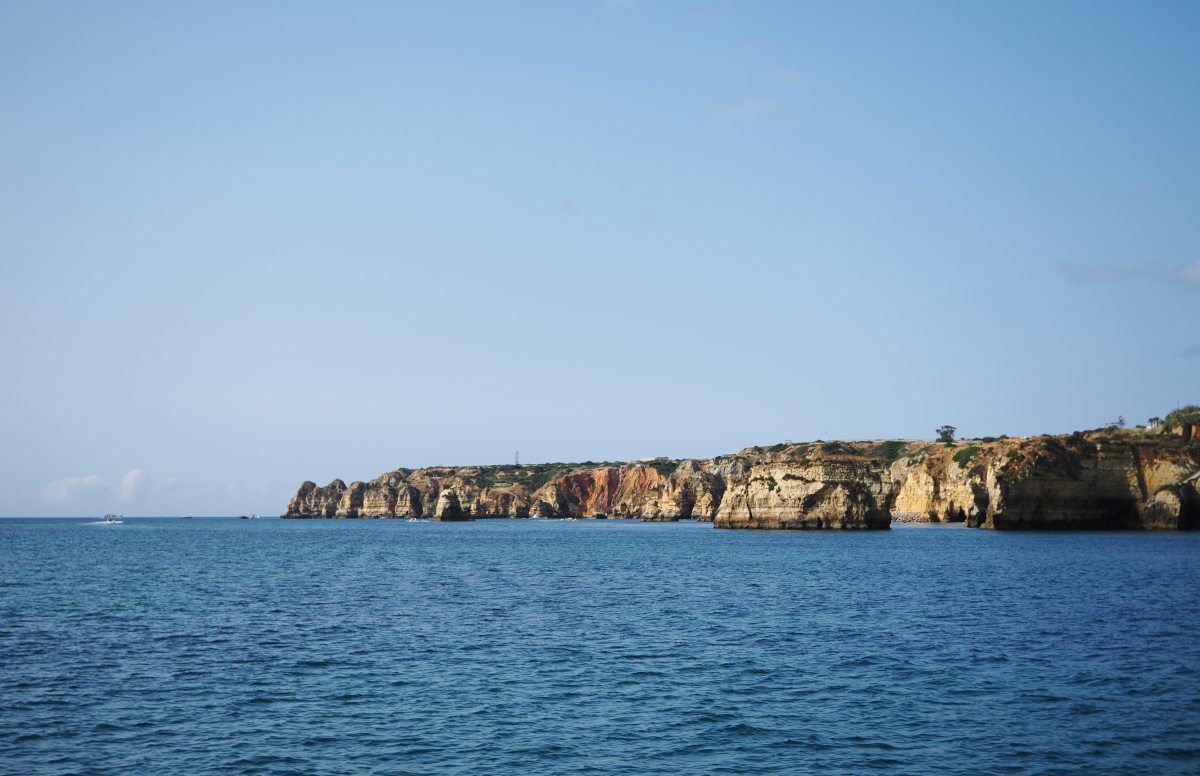
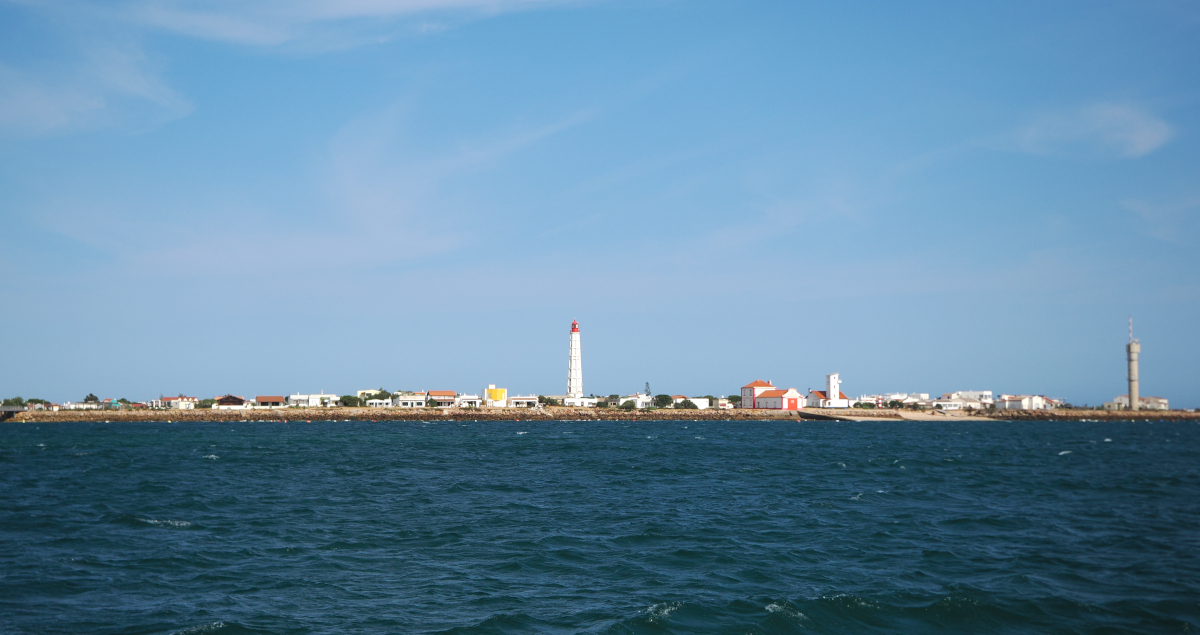
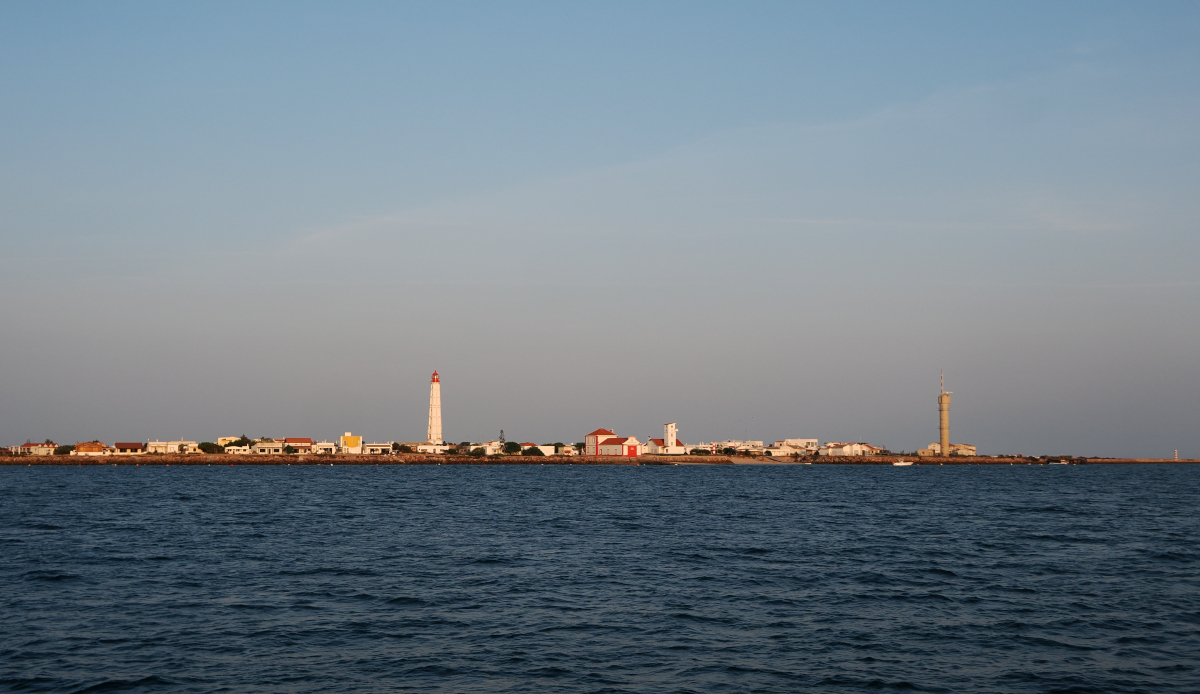
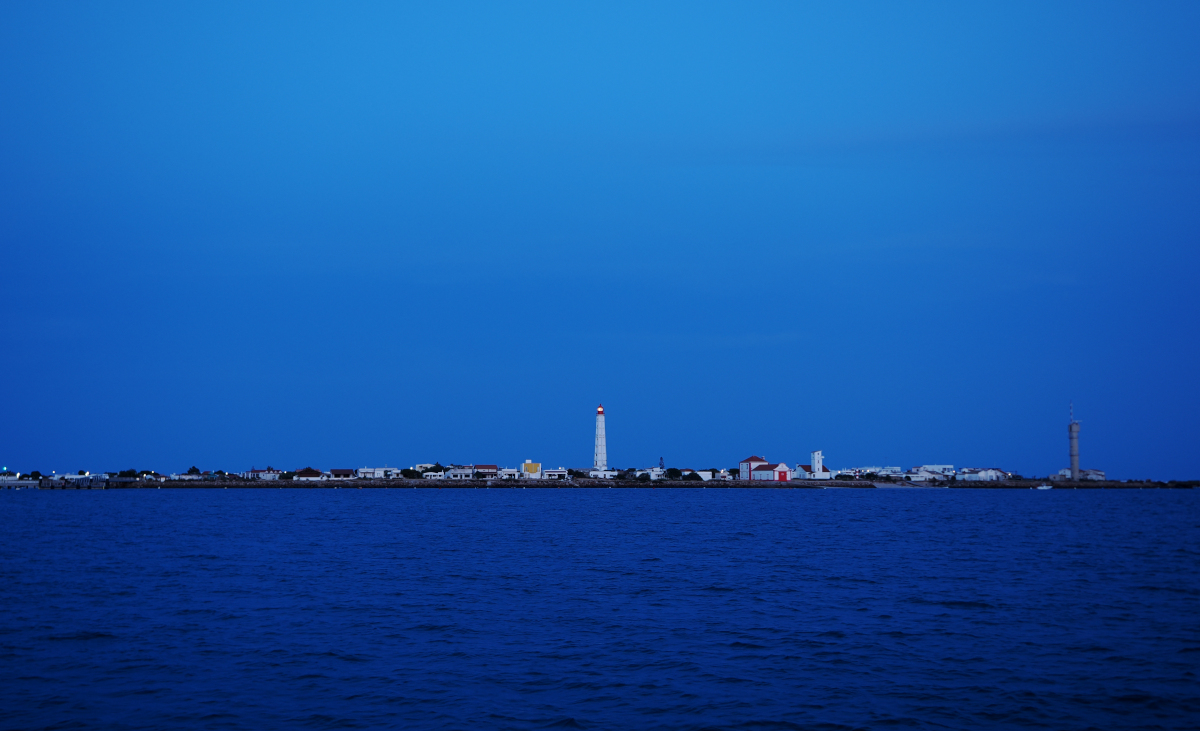
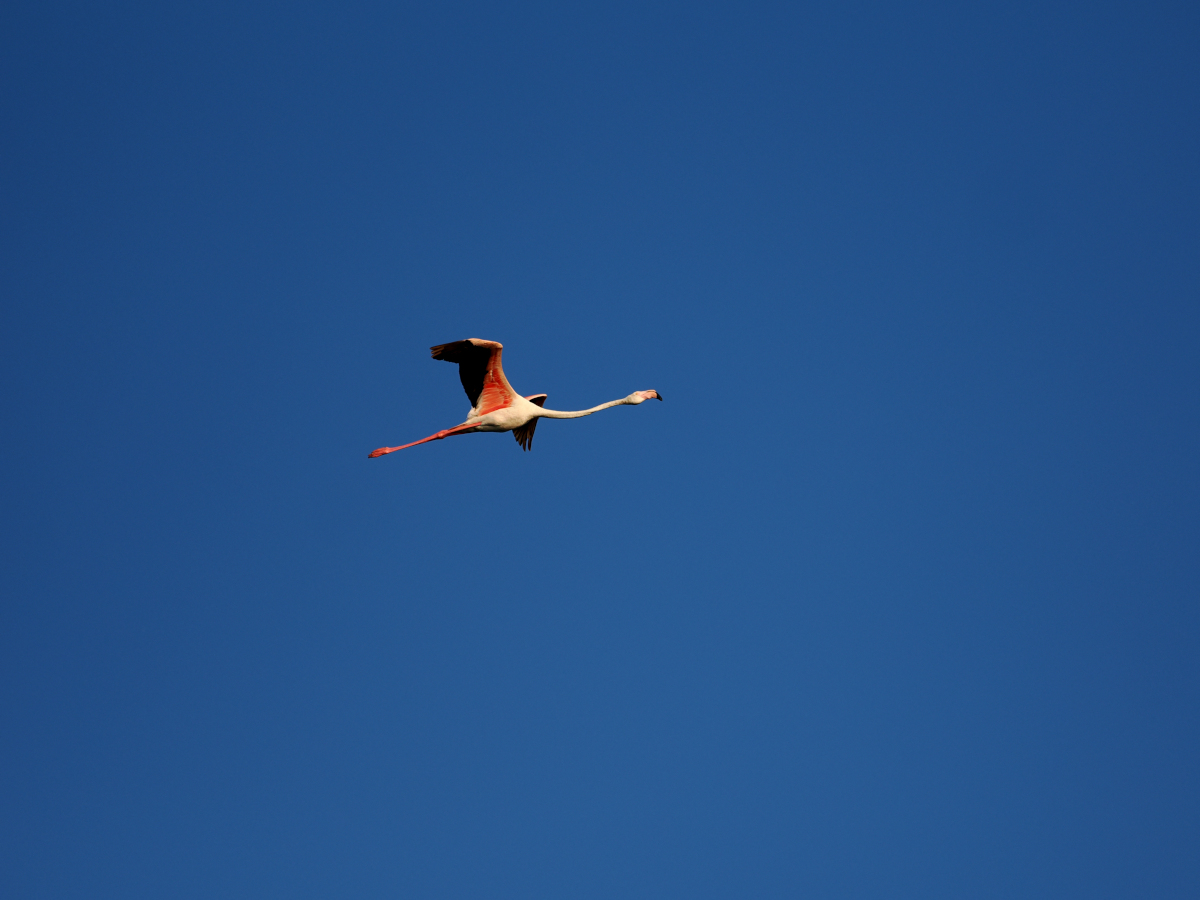
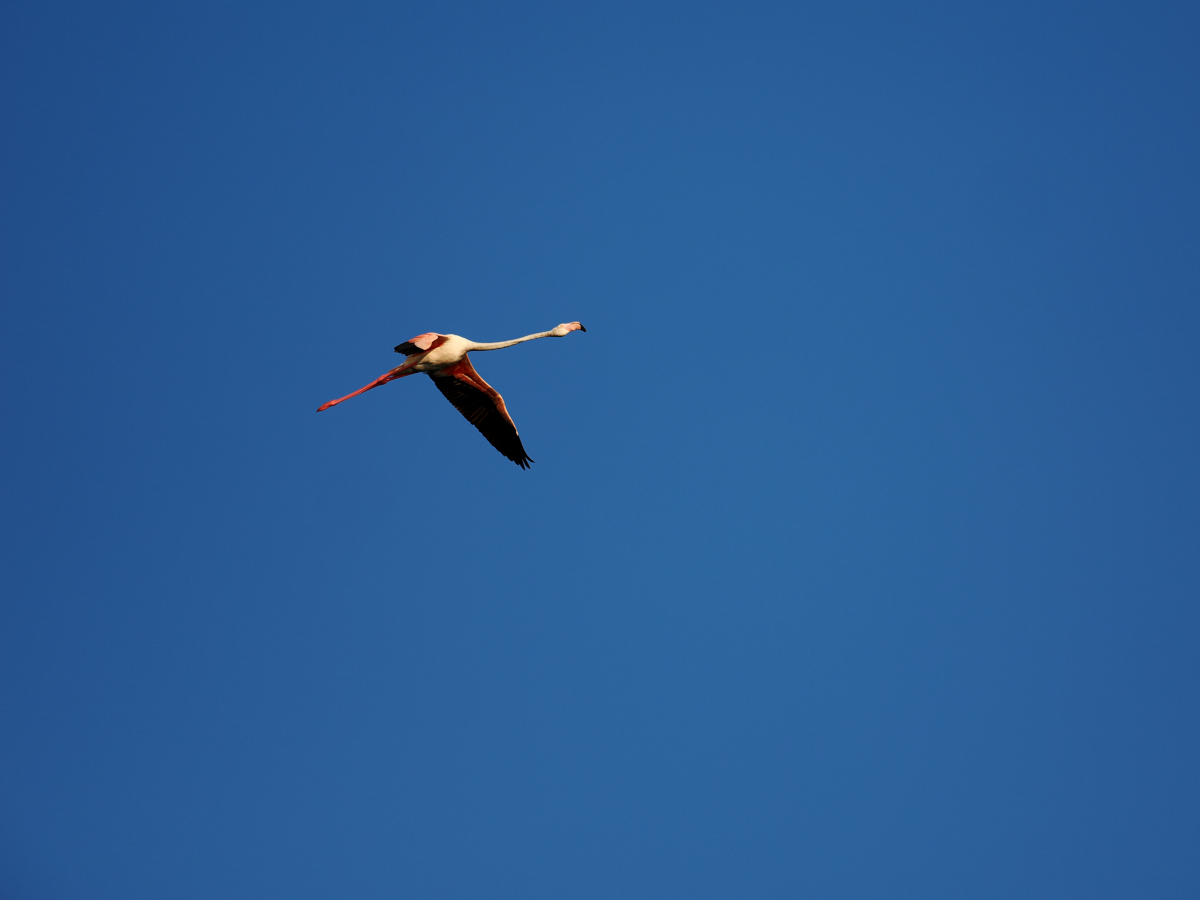
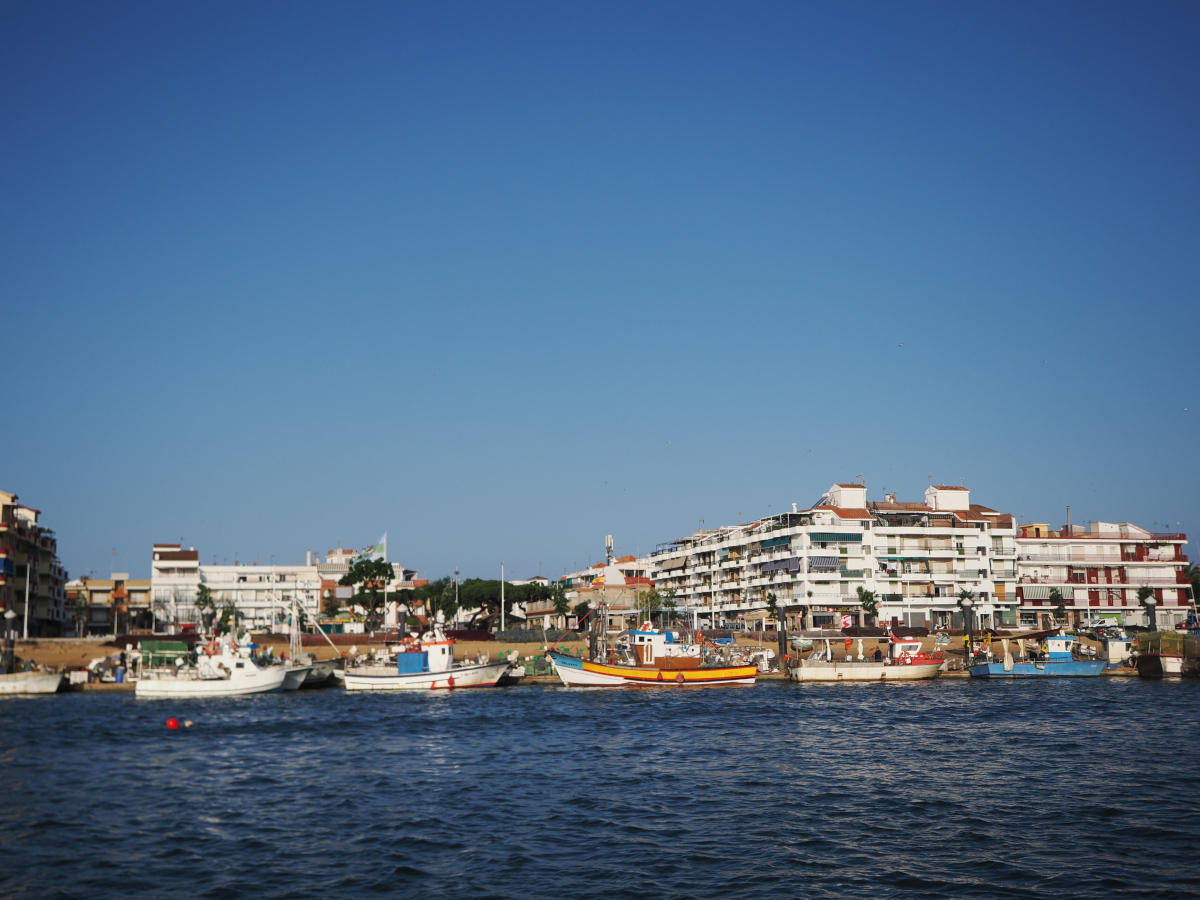
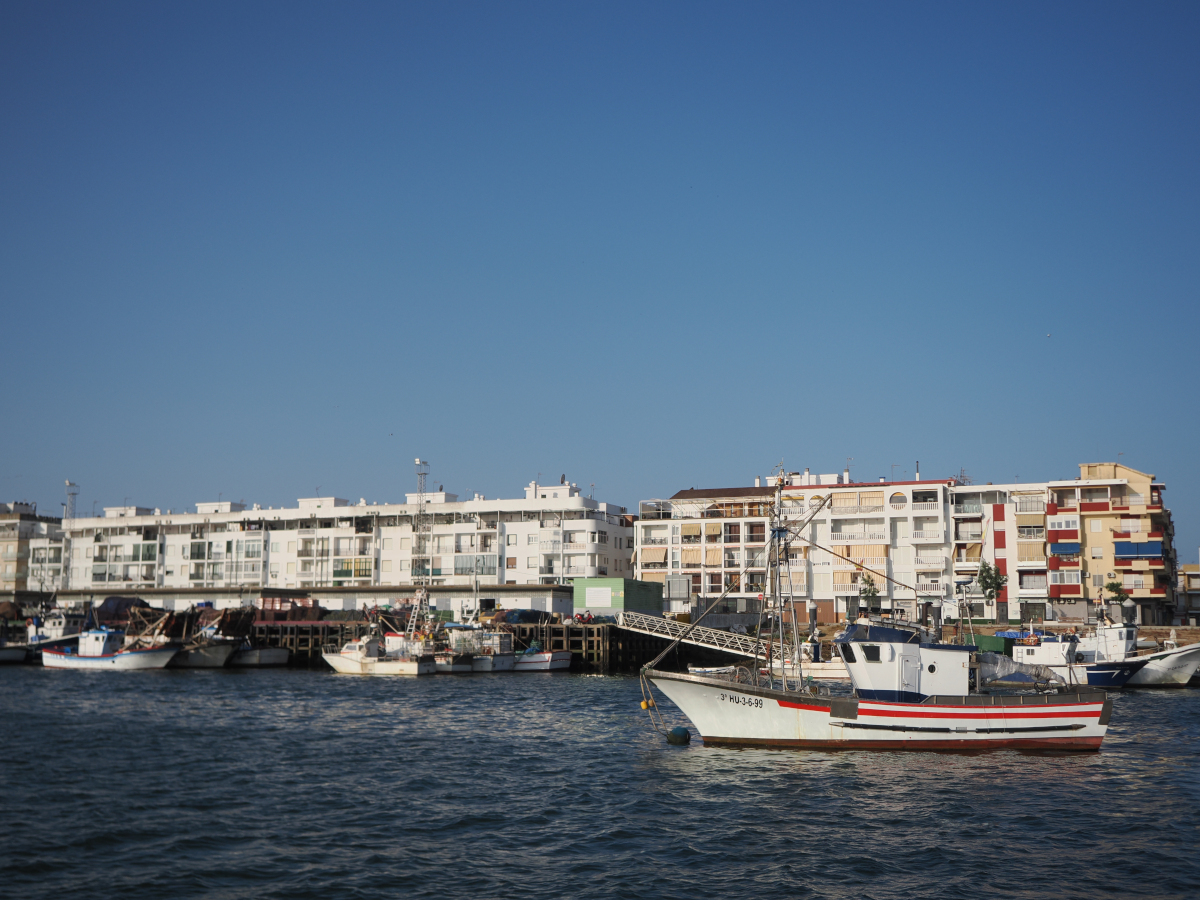
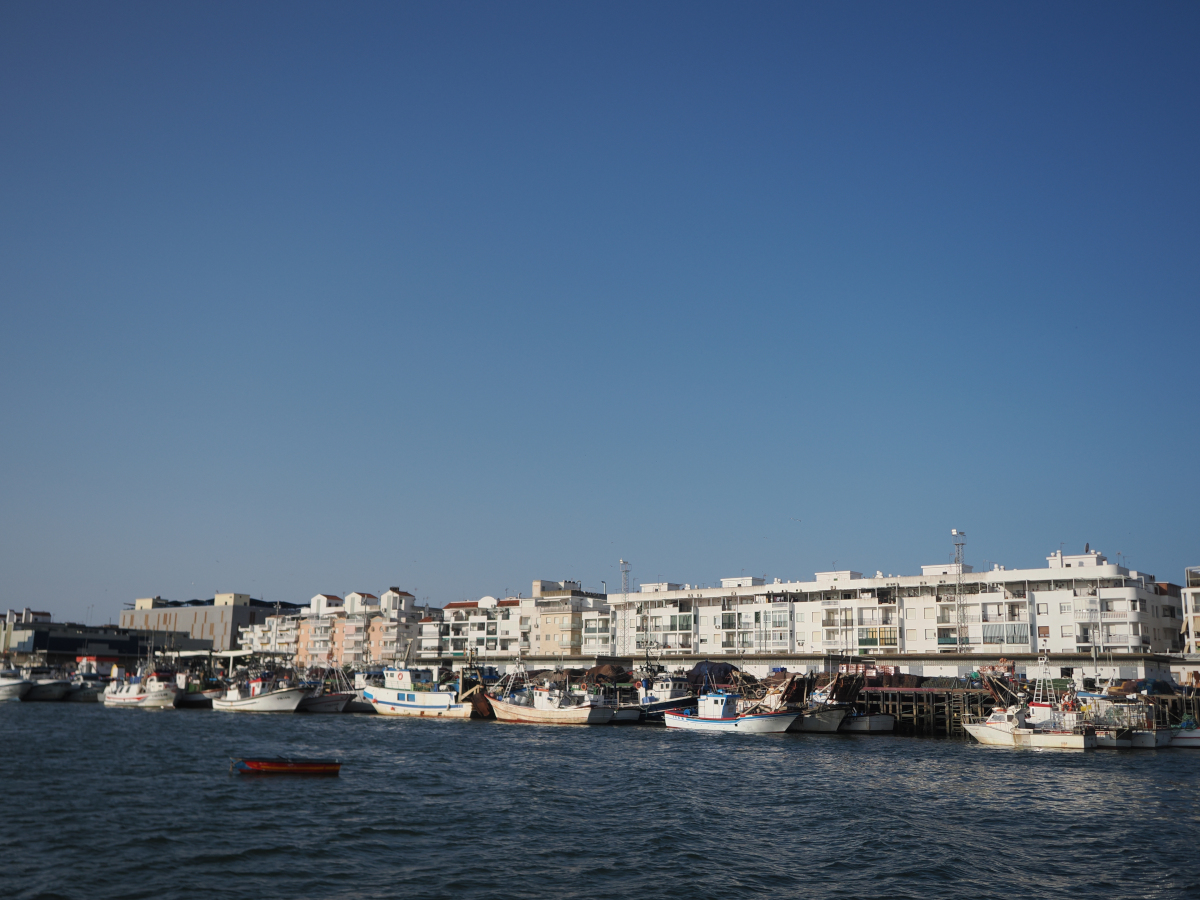
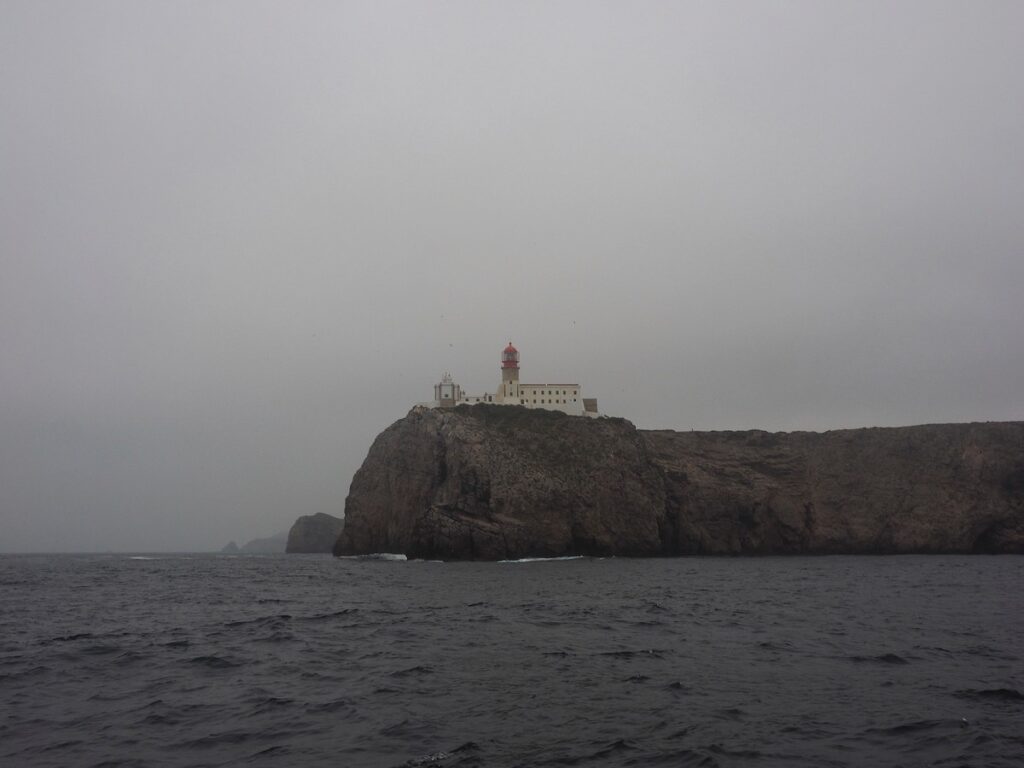
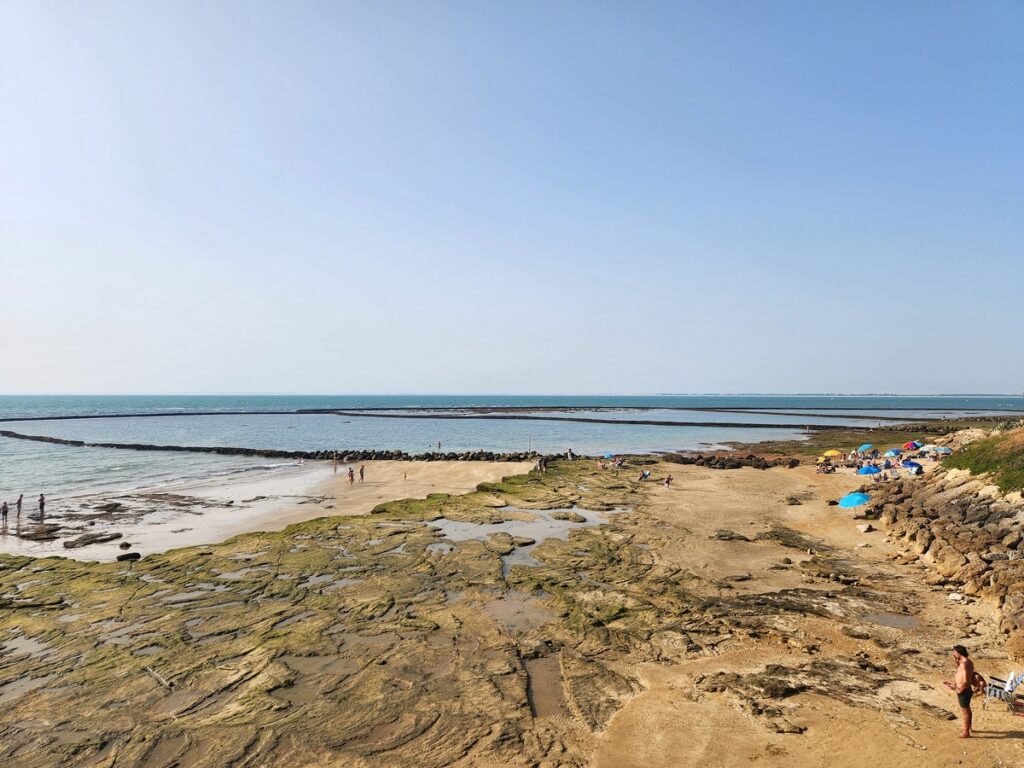
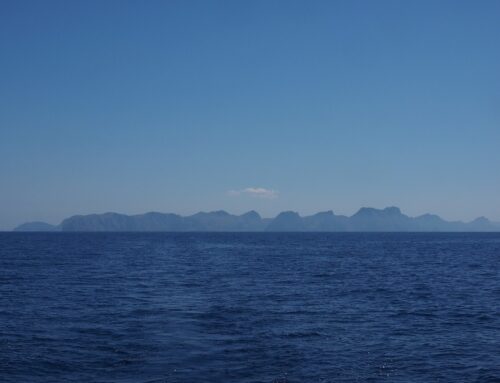

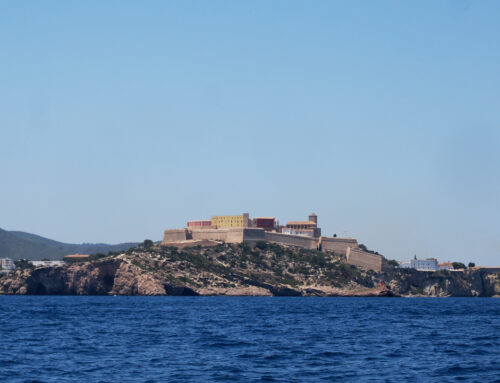
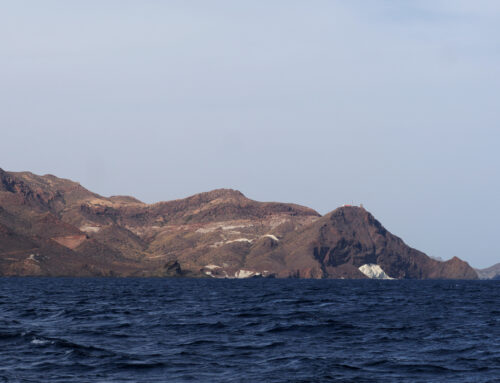
Wow die flamingo’s 🦩!!!
Mooi hè? Had ik niet verwacht dat ik die zou zien.
We all know that the first to discover Australia were the ancestors of the Aboriginal Australians.
Not all of us apparently